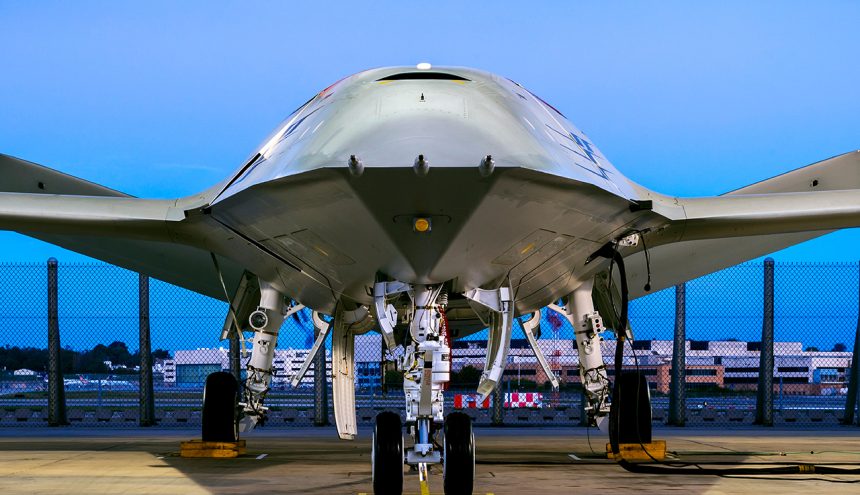Boeing’s MQ-25 unmanned aircraft system has been unveiled.
After teasing its shape with a mysterious tweet that included a photograph of an aircraft under protective cover on Dec. 14, as planned, Boeing has unveiled a better (still, partial) view of its submission to the MQ-25 Stingray unmanned carrier aviation air system competition (UCAAS).
Through its MQ-25 competition (with final proposals due on Jan. 3, 2018), the U.S. Navy plans to procure unmanned refueling capabilities that would extend the combat range of deployed Boeing F/A-18 Super Hornet, Boeing EA-18G Growler, and Lockheed Martin F-35C fighters. The UCAAS will operate from both land bases and the flight deck of its Nimitz- and future Ford-class aircraft carriers, seamlessly integrating with a carrier’s catapult and launch and recovery systems. The induction of the new tanker drone will offload some aerial refueling duties from the F/A-18E/F Super Hornet fleet.
“Boeing has been delivering carrier aircraft to the Navy for almost 90 years,” said Don ‘BD’ Gaddis, a retired admiral who leads the refueling system program for Boeing’s Phantom Works technology organization, in a company public release. “Our expertise gives us confidence in our approach. We will be ready for flight testing when the engineering and manufacturing development contract is awarded.”
According to Boeing the UAS (Unmanned Aerial System) is completing engine runs before heading to the flight ramp for deck handling demonstrations early next year.
The Navy issued its final request for proposals in October. Proposals are due Jan. 3.
With Northrop Grumman withdrawing from the competition in October 2017, Boeing, General Atomics, and Lockheed Martin are the three aerospace company competing for the initial development contract. The U.S. Navy has a requirement for 72 tanker drones, even though the service will initially only buy four examples of the winning design in order to assess whether the winner will be able to meet all the requirements before handing out any larger production deals.
Top image: Boeing photo by Eric Shindelbower









